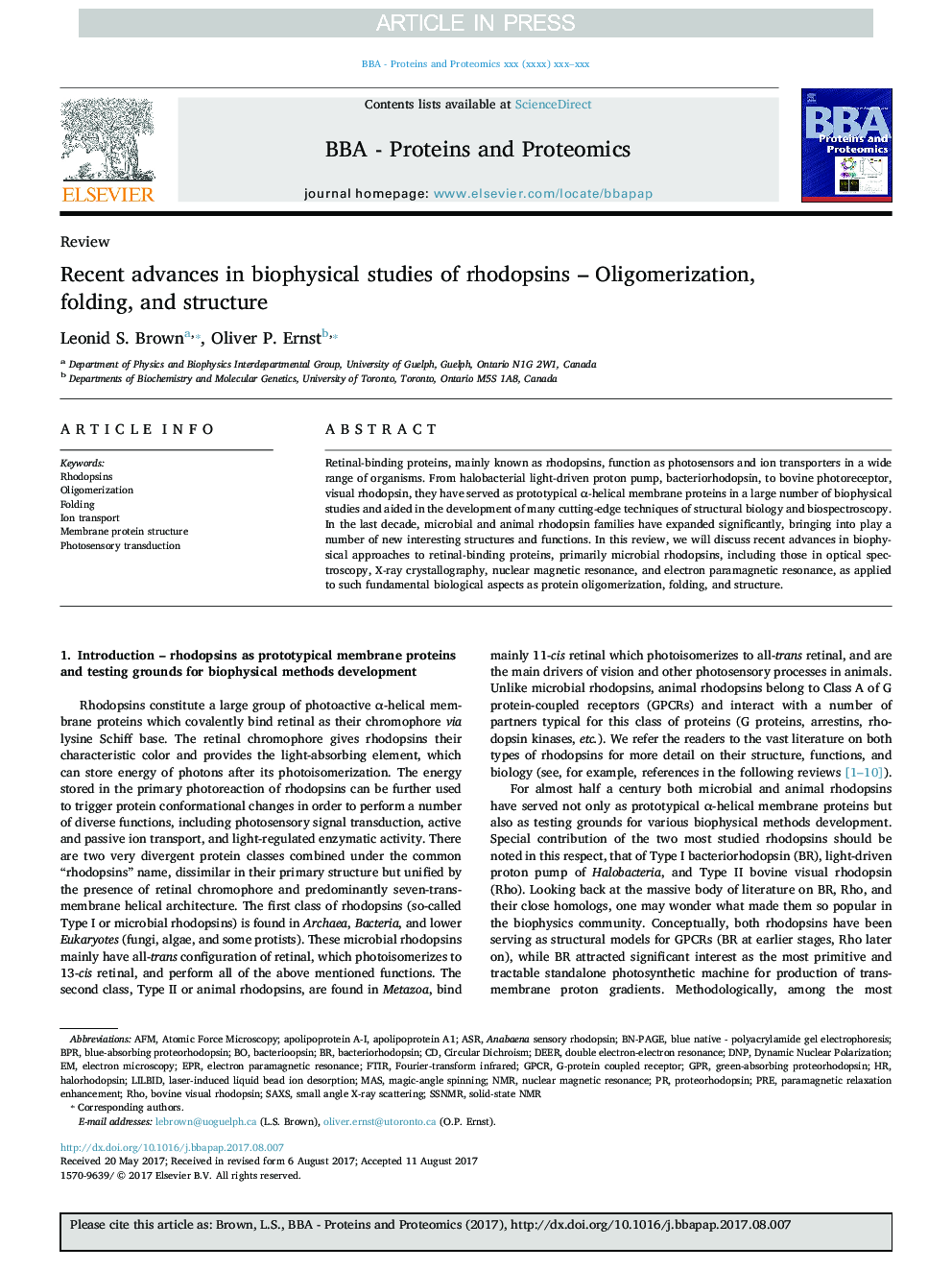| Article ID | Journal | Published Year | Pages | File Type |
|---|---|---|---|---|
| 7560638 | Biochimica et Biophysica Acta (BBA) - Proteins and Proteomics | 2017 | 10 Pages |
Abstract
Retinal-binding proteins, mainly known as rhodopsins, function as photosensors and ion transporters in a wide range of organisms. From halobacterial light-driven proton pump, bacteriorhodopsin, to bovine photoreceptor, visual rhodopsin, they have served as prototypical α-helical membrane proteins in a large number of biophysical studies and aided in the development of many cutting-edge techniques of structural biology and biospectroscopy. In the last decade, microbial and animal rhodopsin families have expanded significantly, bringing into play a number of new interesting structures and functions. In this review, we will discuss recent advances in biophysical approaches to retinal-binding proteins, primarily microbial rhodopsins, including those in optical spectroscopy, X-ray crystallography, nuclear magnetic resonance, and electron paramagnetic resonance, as applied to such fundamental biological aspects as protein oligomerization, folding, and structure.
Keywords
AFMAnabaena sensory rhodopsinSAXSASRssNMRGPROligomerizationBPRhalorhodopsinBN-PAGEDNPProteorhodopsinGPCRnuclear magnetic resonanceG-protein coupled receptorSolid-state NMRApolipoprotein A-IApolipoprotein A1paramagnetic relaxation enhancementphotosensory transductionbacteriorhodopsinbacterioopsinMASFoldingNMRElectron paramagnetic resonanceEPRion transportcircular dichroismRhoMembrane protein structureFTIRFourier-transform infraredpreDynamic nuclear polarizationElectron microscopyatomic force microscopysmall angle X-ray Scatteringmagic-angle spinningDeer
Related Topics
Physical Sciences and Engineering
Chemistry
Analytical Chemistry
Authors
Leonid S. Brown, Oliver P. Ernst,
